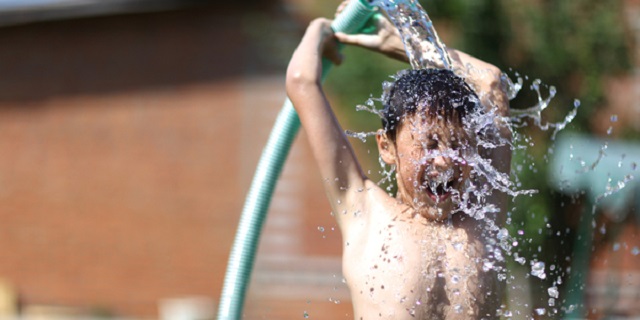With many parts of the country dealing with heat warnings, it’s important to remember that when temperatures rise, you should take extra precautions to avoid the potential for heat-related issues. This includes such things as heat exhaustion or, in a worst-case scenario, even heat stroke. Younger children as well as the elderly are especially susceptible to heat illnesses as are those with certain health conditions including breathing issues.
Tips to prevent heat-related illnesses
• Avoid the sun’s peak hours
It should not come as a surprise that the sun is at its hottest when it is directly overhead so, if possible, you should avoid being in the sun from around 11 AM to 3 PM. If you do have to be outside for work or other reasons, be sure to wear a high factor sunscreen to avoid burning. You should also wear a hat as well as light-coloured, loose-fitting clothing to help keep you cool.
• Stay hydrated
In the sun dehydration can happen more quickly than you might think and if you wait until you feel thirsty, you’re already dehydrated. To avoid dehydration during hot weather, be sure to drink plenty of cool water throughout the day.
• Keep your cool
During heat waves, try to stay in cooler areas as much as possible. If you don’t have sufficient air conditioning in your home, keep all windows facing the sun closed during the day but open windows later in the day to take advantage of the cooler evening air.
Note that many municipalities operate “cooling centres” in government buildings and other public spaces so if it becomes too warm in your home, you may be able to visit a cooling centre. Keep in mind, however, that with the COVID-19 pandemic still very much a threat, be sure to follow all physical distancing rules to prevent spreading the virus.
Recognize the signs of heat-related illnesses
Extreme heat can affect you in many ways and it’s important that you recognize and understand the signs of heat-related illnesses. Some of the more common health issues that can be brought on by high heat levels include:
• Heat cramps
If you’re participating in physical activity outside in the extreme heat, your body will quickly lose water and electrolytes through heavy sweating. This can cause cramping or spasms in your muscles – more critically, muscle cramps are often an early warning of possible heat exhaustion.
If you’re suffering muscle cramps, seek shade immediately and replenish with cool water or to bring your electrolyte levels back to normal, consume a sports drink. Leg cramps are common so elevating your legs may help reduce the severity of the cramps.
• Heat exhaustion
Heat exhaustion is the result of extreme dehydration and is your body’s way to tell you to get out of the sun and drink some fluids now! Excessive sweating, a fluctuating or weak pulse, rapid, shallow breathing, and dizziness and nausea are all signs of heat exhaustion.
If you have any of these symptoms, get out of the sun and immediately find a cool shelter. Drink cool water and if possible, take a cool shower. You can also apply cold, wet towels under the armpits or on the back of the neck to help reduce your body temperature.
• Heatstroke
Heatstroke occurs when your body temperature rises above 40 degrees Celsius and represents a serious health emergency. Heatstroke typically leaves your skin hot and dry to the touch and may also result in a swollen tongue, rapid pulse, shallow breathing, and intense thirst. The victim may also complain of headaches and nausea and may exhibit signs of confusion, slurred speech, and even loss of consciousness and seizures.
Anyone suffering heatstroke needs to have their temperature brought down as quickly as possible. If you suspect someone is suffering from heatstroke, call emergency services immediately. In the meantime, try to keep the person cool by ensuring they are in the shade and assist them with small sips of cool water to help them rehydrate.




 Travel and lifestyle
Travel and lifestyle